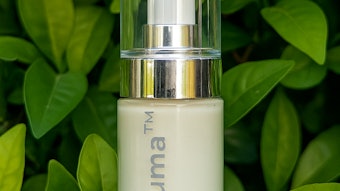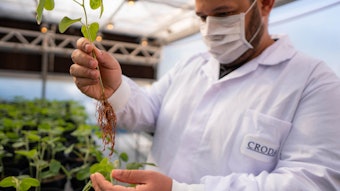
Indie beauty has a claims problem. As discussed in the first part of this series (see sidebar), indie beauty brands are disrupting the cosmetic industry. These brands are less than five years old with limited product offerings, typically in one category, and are founded by both industry insiders and outsiders. For the most part, the products being offered are not innovative but rather twists on existing products based on global wellness trends driven by ethical consumers and retailers’ “clean” lists. Unfortunately, the unintended consequence is massive industry competition and consumer confusion, particularly around claims.
Anatomy of a Claim
Claims are a vital way in which brands communicate the benefits of a product to the consumer. Cosmetic claims, in general, can be divided into six categories: obvious, puffery, emotive, formulation, sensory and performance/efficacy (T-1 see April Digital Magazine).
Claims can be supported in five basic ways, subjective (consumer perception), pseudo-subjective (professional grading), objective (bioinstrumentation), in-vitro (literally “in glass”) modeling and the formula itself. Each type of claim requires a different level of substantiation or none at all.
Obvious, puffery and emotive claims generally do not require support. Clearly, “contains honey” can be supported by the formula if it actually contains honey. Sensory claims like “skin feels refreshed” or “skin feels moisturized” can be supported by consumer perception because it is based on the individual. Claims like “24-hour moisturization” require objective support measured by bioinstrumentation. In vitro support is most often used for proof of concept testing or when it would be unethical to test on human subjects.
In addition to testing to substantiate claims, testing is required to support the safety of a product. The safety of a product must be validated before placing a product on the market. In the absence of safety testing, the U.S. Food and Drug Administration (FDA) requires that it have the following statement on the label: “Warning—The safety of this product has not been determined.”
According to the FDA, 21 CFR 740.10 safety testing “may be considered adequately substantiated if experts qualified by scientific training and experience can reasonably conclude from the available toxicological and other test data, chemical composition, and other pertinent information that the product is not injurious to consumers under conditions of customary use and reasonably foreseeable conditions of misuse. Even if the safety of each ingredient has been substantiated, there usually still is at least some toxicological testing needed with the formulated product to assure adequate safety substantiation.”
The standard safety tests are human repeat insult patch testing (HRIPT), microbial testing (water activity, preservative efficacy, microbial limits) and in some cases eye safety (HET-CAM, epi-ocular).
Frequently, safety testing creates product claims. “Tear-free,” “dermatologist tested,” “safe for sensitive skin” and “safe for cosmetic lens wearers” are examples of product claims supported by safety testing. The key is that both types of testing are needed to place the product on the market safely and make claims that are supported.
Unlike cosmetics, over-the-counter (OTC) products may have drug claims. Examples of OTCs are sunscreens or acne products. OTC monographs dictate the approved drug actives, use levels, claims and warnings—basically everything that must be reported on the label, including the drug facts box. Claims like “clears up blemishes and allows skin to heal” and “helps prevent sunburn” are examples of approved claims under the monographs.
Old School Testing, Claims, and Claims Support
In the pre-indie brand era, as was discussed in the first two parts of this series, product claims and ingredient education were the direct result of the work of the large technical staffs at the big traditional brands. Products were thoroughly tested and evaluated for safety and efficacy, after which regulatory and legal professionals reviewed the claims against the testing, regulations and legal precedence.
Since most brands were using the same ingredients, there was little differentiation in the product claims between the big brands. Sodium hyaluronate, superoxide dismutase, alpha hydroxy acids (AHAs), and vitamins C and E were found in many popular products. It was for this reason that the big brands would conduct research to find and patent novel ingredients and delivery systems to create a point of difference.
Research during that time produced significant discoveries related to existing ingredients. For example, the use of certain ingredients or combinations of ingredients could rebuild collagen, cell signaling or increase elasticity. However, as discussed in the second part of this series, the U.S. FDA disallowed many of these claims associated with the new ingredients, despite mountains of evidence.
So, some brands began patenting complexes as a way to gain a competitive edge. For example, if a big brand patented the use of tocopherol, retinol and ascorbic acid as a complex, then no one else could use all three ingredients together in their formulas. The complexes were often given aspirational trade names—for example, “Fountain of Youth Complex”—so as not to disclose the ingredient combinations and to imply claims that were not explicitly permitted by the U.S. FDA. Often, the big brands would review other brands’ formulations and file lawsuits if they found the combination; thus, the legal review of formulas became increasingly important.
The bottom line is that while the big brands may have pushed the envelope with their claims, they had also conducted safety and efficacy testing and had support for what was on the label.
Common Claims Mistakes by Indie Brands
Typically, when I start working with a brand, I am asked to review their artwork. When I tell the brand that they cannot make claims I hear, “Why can’t I say that, so-and-so says it.” There are several reasons for this response, but the source is always the same—lack of industry experience or no exposure to the claims substantiation process, even if from a big brand.
The first reason a brand may not be permitted to make a claim is that there is no data to substantiate it. As I wrote in the first two parts of this series, many indie brands create claims based on reviewing other brands’ claims and do not realize that these claims need support. The disallowed claims almost always require objective support, and none is available.
Another reason a particular claim cannot be made is that the brand is making structure-function or OTC drug claims. Claims like “reduces or normalizes oil production” or “heals inflammation” are drug claims. Unless the product contains a drug active, these claims cannot be made on a cosmetic product.
In some cases, the brand will provide a study conducted by the raw material manufacturer as support. Unfortunately, efficacy testing must be conducted on the final product, as discussed in “Product Development in the Indie Brand Era.” Often the claim can be salvaged by softening the language if the ingredient is being used at the same level as was used by the manufacturer in testing. So, “reduces fine lines and wrinkles” may become “helps to improve the appearance of fine lines and wrinkles.” The use of the word “helps” is the key to softening the claim.
In other cases where ingredient claims are made, indie brands will assign a specific end benefit to the ingredient. “Specially formulated with green tea to protect skin,” “contains watermelon extract to boost hydration,” and “with cocoa butter to protect dry, chapped skin” are all problematic for different reasons.
For the first two, unless the product was tested with and without the ingredient to show that that ingredient—green tea or watermelon—are the source of that benefit, then it is unsupported. The word protect, in the first case, implies a drug benefit. While the claim “with cocoa butter to protect dry, chapped skin” may seem innocuous, cocoa butter is a skin protectant drug active and the claim is explicitly defined in the skin protectant monograph.
The last reason a claim may be rejected is if some testing was done but either the testing was not appropriately designed for the claims or the results are misunderstood or overstated. For example, an HRIPT is not enough to substantiate “reduces redness” because HRIPT is used to see if a product will induce a reaction causing redness, not reduce it. In this case, the test was not appropriately designed for the claim.
Another situation that I see frequently is a study, either consumer perception or clinical, that involves too few people to appropriately support the claim. The smaller the number, the more impactful negative responses are to the overall results. Ten negative responses in a study of 150 people provides a very different outcome than 10 in a study of 25.
Likewise, a consumer perception test with 65% of the subjects saying that their “skin feels healthier” does not mean that the product “dramatically improves the health of the skin.” The key is in how the questions are asked. This case illustrates another issue, which is the lack of statistical analysis. Using the above example, just because the “majority,” or 65%, agree to a statement doesn’t necessarily mean that it is statistically significant or, in other words, supported.
The net result is that many indie brands, particularly those that do not engage technical professionals, are creating consumer confusion as it relates to safety and efficacy.
Free-of Confusion
Further complicating this is the use of “free of “claims. Brands are using these claims to lure consumers into thinking that their products are safer. However, lack of regulation and industry knowledge are leading to misinformation. Many of the free of claims are banned substances, ingredients that would never be used in that product type/category, or ingredients that have been proven to be safe but are synthetic or on a retailer’s clean list.
For the full article, check out Global Cosmetic Industry's April digital magazine.
Karen Yarussi-King is the president of Global Regulatory Associates (www.globalregassociates.com).
Footnotes:
a“Silicones: Rethinking Clean, Safe Beauty,” Page 42-45; http://gcimagazine.texterity.com/gcimagazine/february_2019/











